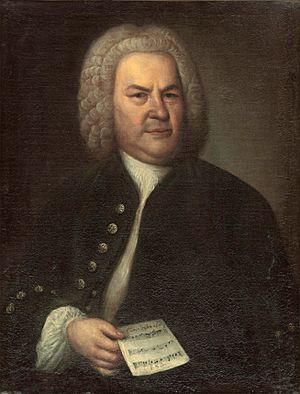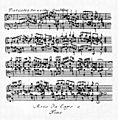Goldberg Variations facts for kids
The Goldberg Variations, BWV 988 is a work for keyboard by Johann Sebastian Bach. It was written about 1741. The work consists of an aria and thirty variations. The aria was not original with Bach, but was probably based on a now lost French dance tune. The work is believed to have been commissioned by a pupil of Bach's named J. G. Goldberg. Goldberg was a celebrated virtuoso, and used the work to lull his insomniac employer Count Keyserkingk to sleep.
The basic harmonies and structure of the aria remain consistent from variation to variation. The work ends with a quodlibet, a humorous combination of two popular tunes. John Keillor writes, "The work is sublime and compassionate, graceful, warm, and relentlessly intricate, a demonstration of unmatched craft in music history and genuine, poetic imagination." In modern times, the work is played on both the harpsichord and the piano.
- Woodstra, Chris, et. al. 2005. All Music Guide to Classical Music. All Music Guide, LLC. ISBN: 0-87930-865-6.
Images for kids
See also
 In Spanish: Variaciones Goldberg, BWV 988 para niños
In Spanish: Variaciones Goldberg, BWV 988 para niños





